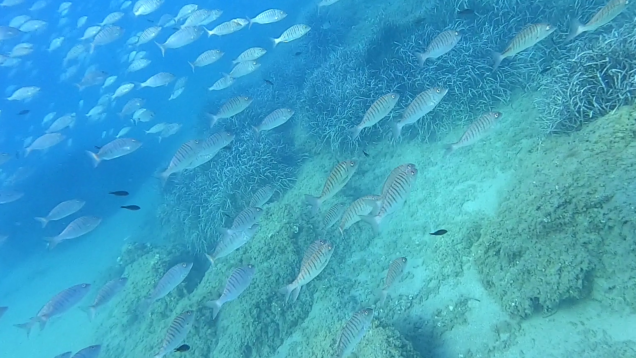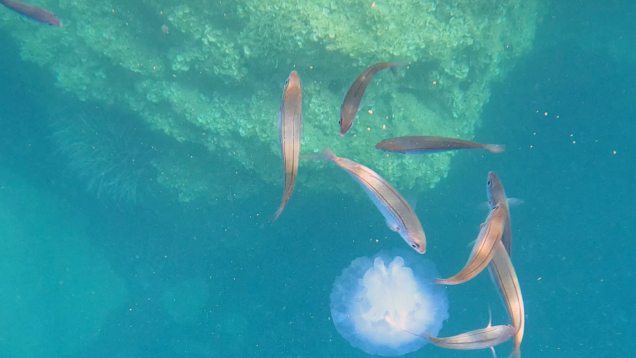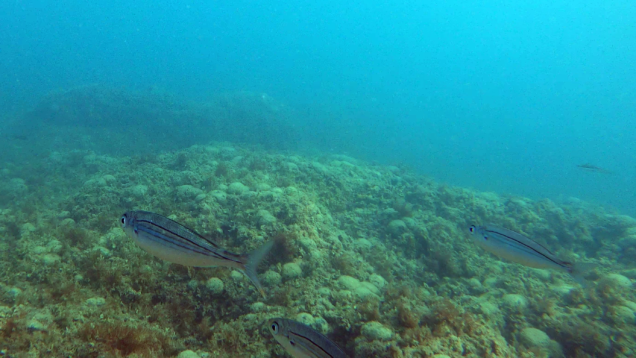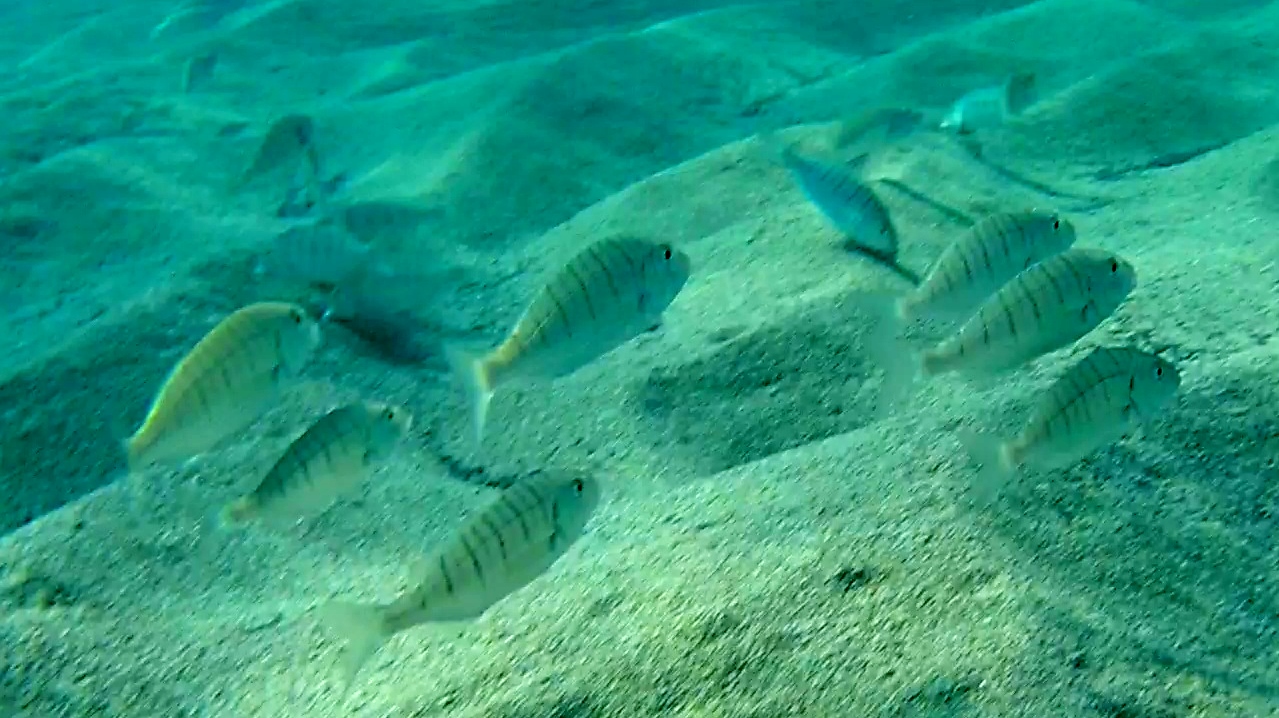Picarel fish Spicara smaris
Picarel fish, Spicara smaris, is native to the subtropical eastern Atlantic Ocean including the coasts of Portugal, the Canary Islands and Morocco, the Mediterranean Sea and the Black Sea. It is usually found in seagrass meadows and over sandy and muddy seabeds. Its depth range is generally 15 to 170 m. but it has been recorded at depths of 328 m. in the eastern Ionian Sea.








